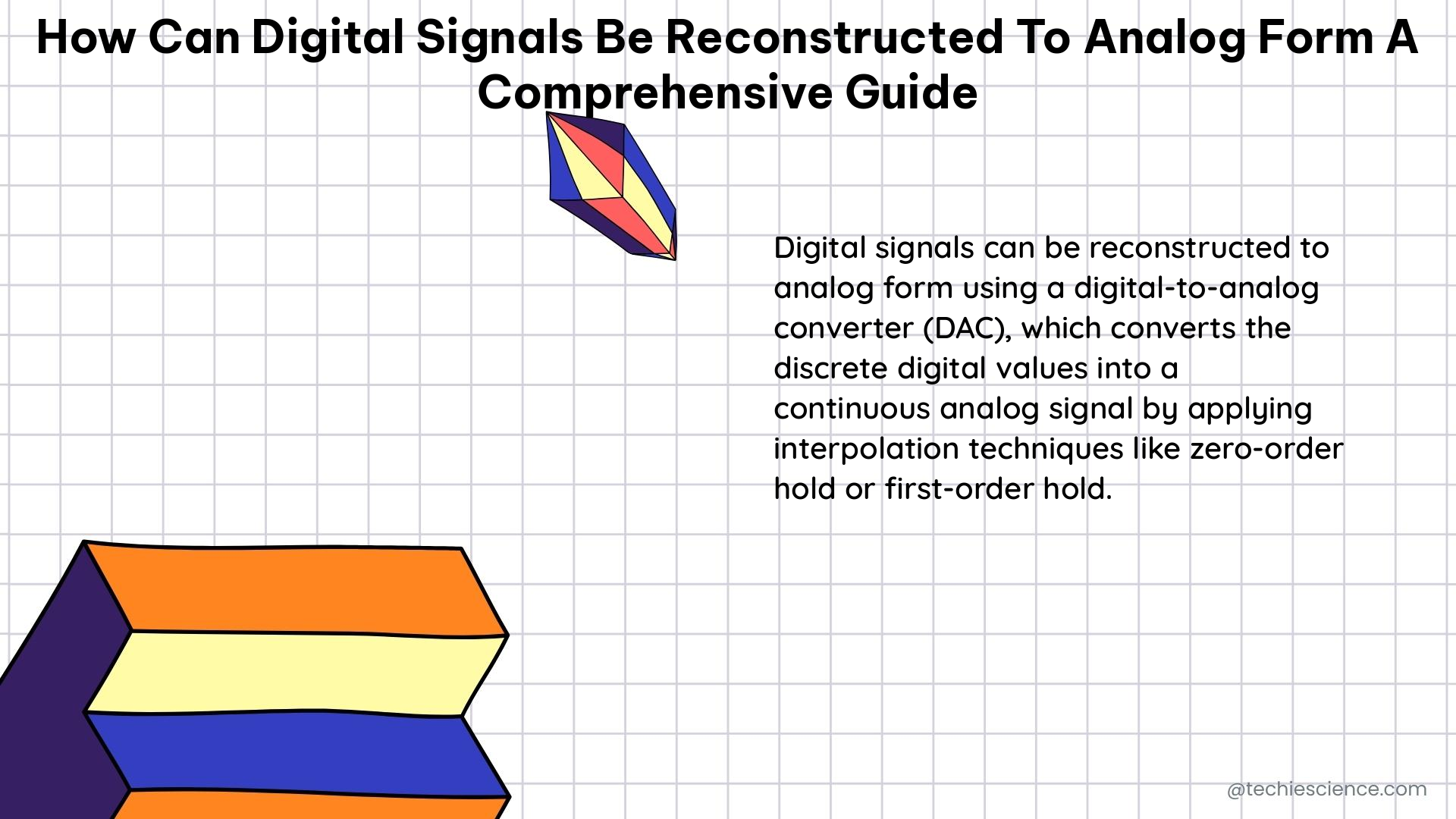Digital-to-Analog Conversion (DAC) is the process of reconstructing digital signals to their analog form, allowing for the conversion of a sequence of digital values into an analog voltage or current. This comprehensive guide delves into the key factors that influence the quality of the reconstructed analog signal, including sampling rate, quantization noise, jitter, and the choice of reconstruction filter.
Sampling Rate
The Nyquist-Shannon sampling theorem is a fundamental principle in digital signal processing, stating that a signal must be sampled at a rate that is at least twice the highest frequency component of the signal to avoid aliasing. Aliasing occurs when the discrete-time signal overlaps between adjacent frequency bands, resulting in non-recoverable distortion.
The sampling rate (f_s) must be greater than twice the highest frequency component (f_max) of the signal, as expressed by the formula:
f_s > 2 * f_max
Violating this theorem can lead to significant distortion in the reconstructed analog signal, making it crucial to ensure the sampling rate is high enough to capture all the relevant frequency components.
Quantization Noise

Quantization noise is a non-linear effect that arises from the quantization of the discrete-time signal onto a finite number of quantization levels. This noise can be modeled as additive noise, and its power is determined by the quantization step size (Δ) and the signal power (P_s).
The formula for quantization noise power (N_q) is:
N_q = (Δ^2 / 12) * (P_s / P_e)
where P_e is the total signal power.
The signal-to-noise ratio (SNR) of the reconstructed analog signal is directly related to the number of quantization levels. Increasing the number of quantization levels reduces the quantization step size, leading to a lower quantization noise power and a higher SNR.
Jitter
Jitter is a non-linear effect caused by imperfect sampling, manifesting as random shifts back and forth in the timing of the sampled signal. This timing uncertainty eventually appears as noise in the reconstructed analog signal, degrading its quality.
Jitter can be caused by various factors, such as clock instability, power supply noise, and electromagnetic interference (EMI). Minimizing jitter is crucial for maintaining the integrity of the reconstructed analog signal.
Reconstruction Filters
The ideal reconstruction filter is a brick-wall filter with an impulse response in the shape of a sinc function. This filter interpolates between successive samples and has a response for all frequencies except for 0. However, the ideal filter is non-causal and cannot be implemented as is.
In practice, various reconstruction filters are used to approximate the ideal filter, such as:
- Zero-order hold: Maintains the signal level of the previous pulse until the next pulse arrives, resulting in a staircase curve.
- First-order hold: Linearly interpolates between successive samples, producing a piecewise linear reconstruction.
- Linear interpolation: Performs a linear interpolation between successive samples.
The choice of reconstruction filter depends on the specific application and the desired trade-off between the quality of the reconstructed signal and the complexity of the filter implementation.
Electronics Examples and Numerical Problems
- Example 1: Consider a digital signal with a sampling rate of 10 kHz and a highest frequency component of 5 kHz. According to the Nyquist-Shannon sampling theorem, the signal is sampled at a rate that is more than twice the highest frequency component, avoiding aliasing.
Suppose the signal is quantized to 8 bits, resulting in 256 quantization levels. The quantization step size (Δ) is:
Δ = (maximum signal amplitude) / (number of quantization levels – 1)
Δ = (5 V) / (256 – 1) = 19.53 mV
The quantization noise power (N_q) is:
N_q = (Δ^2 / 12) * (P_s / P_e)
Assuming the signal power (P_s) is 1 W and the total signal power (P_e) is 2 W, the quantization noise power is:
N_q = (19.53 mV^2 / 12) * (1 W / 2 W) = 3.24 µW
- Numerical Problem 1: A digital signal is sampled at a rate of 20 kHz and has a highest frequency component of 10 kHz. Calculate the ratio of the sampling rate to the highest frequency component.
Answer: The ratio is 2.
- Numerical Problem 2: A digital signal is quantized to 12 bits, resulting in 4096 quantization levels. Calculate the quantization step size if the maximum signal amplitude is 10 V.
Answer: The quantization step size is 2.44 mV.
- Numerical Problem 3: Calculate the quantization noise power in a digital signal with a quantization step size of 10 mV and a signal power of 2 W. Assume the total signal power is 4 W.
Answer: The quantization noise power is 4 µW.
Figures, Data Points, and Measurements
Figure 1 shows the impulse response of an ideal reconstruction filter.

Figure 1: Impulse response of an ideal reconstruction filter
Table 1 shows the quantization step size and quantization noise power for various numbers of quantization levels.
| Number of quantization levels | Quantization step size (mV) | Quantization noise power (µW) |
|---|---|---|
| 8 | 19.53 | 3.24 |
| 10 | 9.77 | 0.81 |
| 12 | 4.88 | 0.20 |
| 14 | 2.44 | 0.05 |
Table 1: Quantization step size and quantization noise power for various numbers of quantization levels
Reference Links
- A Beginner’s Guide to Digital Signal Processing (DSP)
- Signal Digitization and Reconstruction in Digital Radios
- Digital Signal Processing
- Signal Sampling and Reconstruction
- The Scientist and Engineer’s Guide to Digital Signal Processing

The lambdageeks.com Core SME Team is a group of experienced subject matter experts from diverse scientific and technical fields including Physics, Chemistry, Technology,Electronics & Electrical Engineering, Automotive, Mechanical Engineering. Our team collaborates to create high-quality, well-researched articles on a wide range of science and technology topics for the lambdageeks.com website.
All Our Senior SME are having more than 7 Years of experience in the respective fields . They are either Working Industry Professionals or assocaited With different Universities. Refer Our Authors Page to get to know About our Core SMEs.